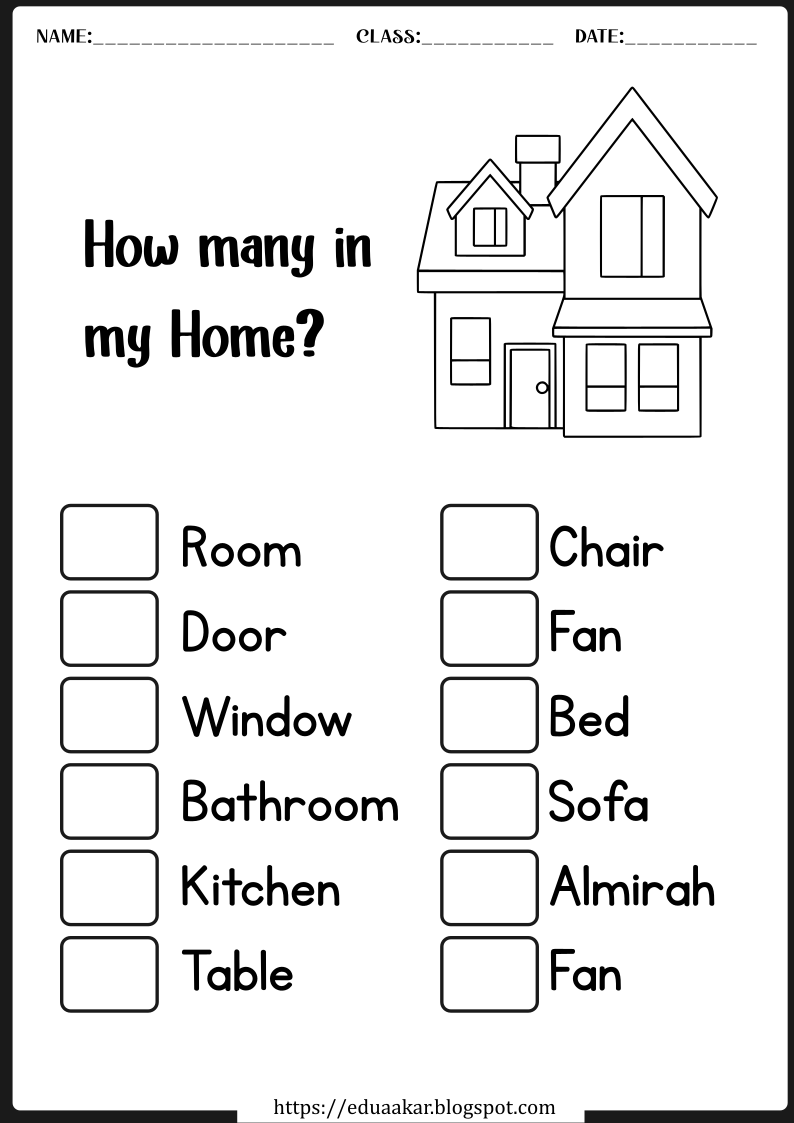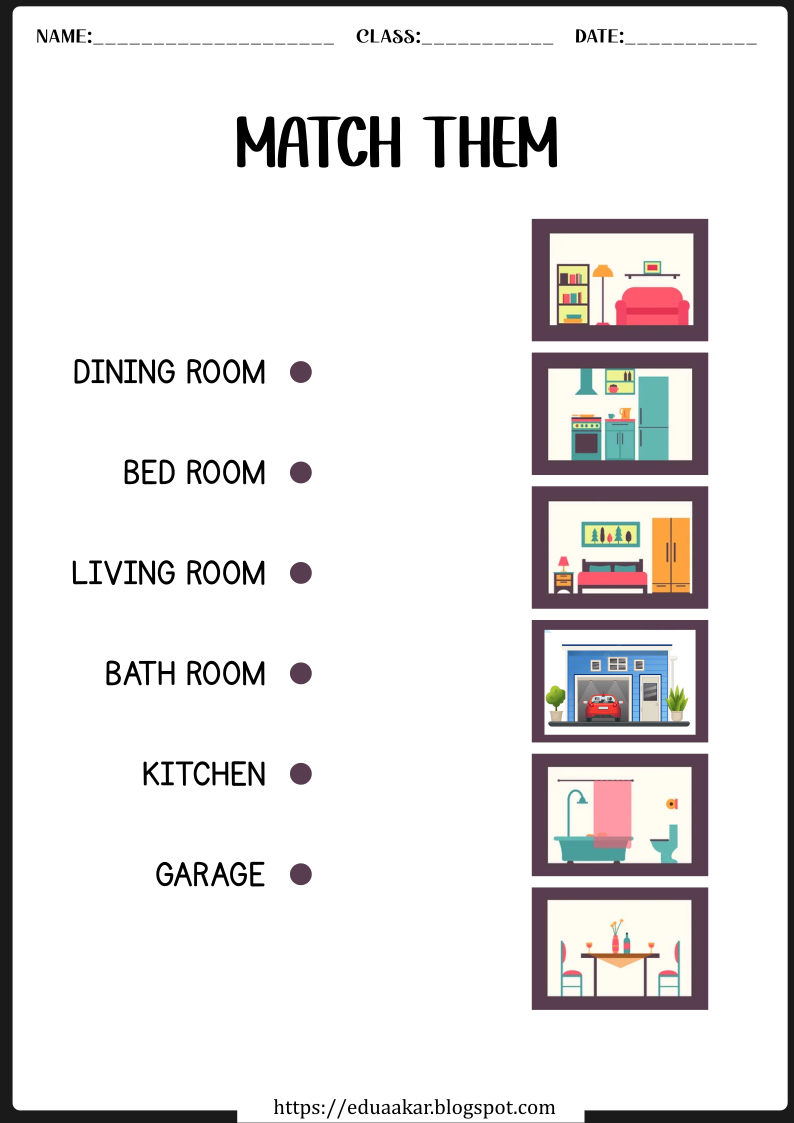As a parent or teacher of a kindergartener, it's important to teach children about the different rooms and areas of a house. Not only does it help them identify their surroundings, but it also provides them with a sense of familiarity and security. In this post, we will cover the different areas of a house, activities kids can do in each area, clean and dirty rooms, objects that belong to each room, quiz questions for kids, and provide free worksheets that you can download and print.
Rooms and Areas of the House
Let's start with the different rooms and areas of a house. A house can have many different areas, including the living room, kitchen, dining room, bedrooms, bathroom, garage, balconies, and garden. Each area has its own purpose and function. For example, the living room is where families usually spend time together watching TV or playing games, while the kitchen is where meals are prepared and cooked. The garage is where cars are parked, and the garden is an outdoor area where you can plant flowers or vegetables. By introducing these different areas to kids, they can begin to understand their home environment better.
Activities Kids Can Do in Different Areas of the House
Next, let's talk about the different activities kids can do in each area of the house. In the living room, kids can play with their toys or read books. In the kitchen, they can help prepare meals or set the table. In the garden, they can plant flowers or play games. It's important to provide age-appropriate activities that are safe for kids to do in each area of the house.
Clean and Dirty Rooms
It's essential to teach kids the importance of keeping rooms clean. Some rooms, like the kitchen and bathroom, are considered "dirty" because they are more prone to messes and germs. Other rooms, like the living room and bedroom, are typically considered "clean." It's crucial to explain to kids why keeping these rooms clean is essential for their health and well-being.
Objects Available/Belonging to Each Room
Another important concept to teach kids is which objects belong to each room. For example, in the kitchen, you'll find a stove, refrigerator, and sink. In the bathroom, you'll find a bathtub, sink, and toilet. By introducing them to these objects, kids can begin to understand the purpose of each room and identify what belongs where.
Quiz Questions for Kids
Now that kids have learned about the different areas of the house, activities they can do, clean and dirty rooms, and objects that belong to each room, it's time for a quiz! Here are some questions to ask kids:
- Where in the house do you brush your teeth?
- Where in the house does your mom cook food?
- Where do you sleep in the house?
- Where do you eat your dinner in the house?
- Where do you relax together with your family in the house?
- Where do you plant in the house?
Free Worksheets
Finally, we have some free worksheets that you can download and print. These worksheets include activities that reinforce the different areas of the house, activities kids can do in each area, clean and dirty rooms, and objects that belong to each room. You can use these worksheets to help kids learn and remember the different concepts covered in this post.
Teaching kids about the different rooms and areas of a house is an essential part of their learning and development. By introducing them to different areas of a house, activities they can do, clean and dirty rooms, and objects that belong to each room, you can help them understand their home environment better.
House Worksheets in PDF Format
To download all worksheets as PDF file, click the download button below.





